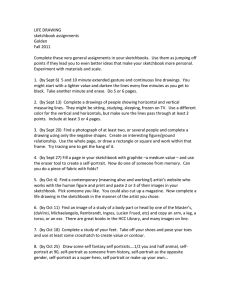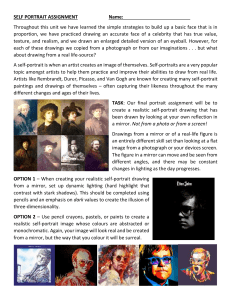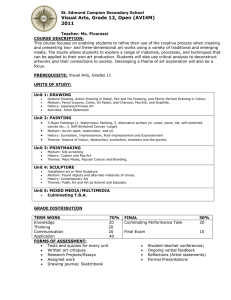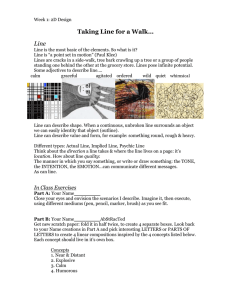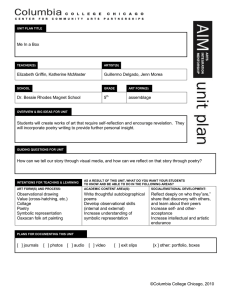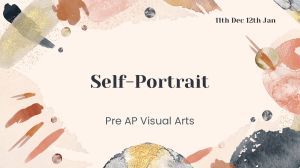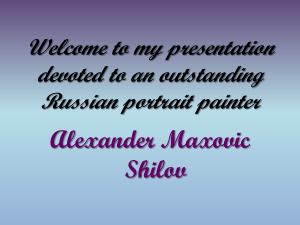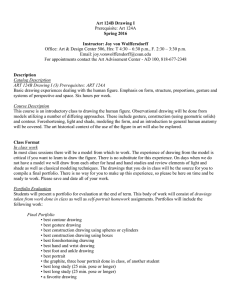ART III - REFLECTIVE SELF-PORTRAIT (HW) LESSON FOCUS:
advertisement
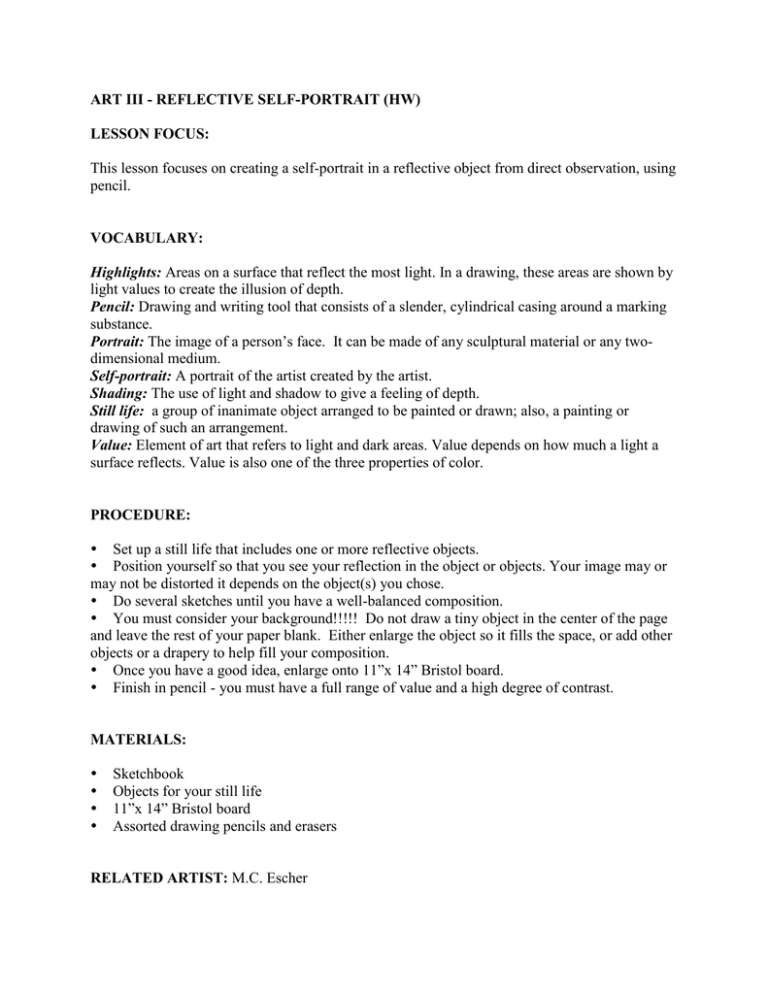
ART III - REFLECTIVE SELF-PORTRAIT (HW) LESSON FOCUS: This lesson focuses on creating a self-portrait in a reflective object from direct observation, using pencil. VOCABULARY: Highlights: Areas on a surface that reflect the most light. In a drawing, these areas are shown by light values to create the illusion of depth. Pencil: Drawing and writing tool that consists of a slender, cylindrical casing around a marking substance. Portrait: The image of a person’s face. It can be made of any sculptural material or any twodimensional medium. Self-portrait: A portrait of the artist created by the artist. Shading: The use of light and shadow to give a feeling of depth. Still life: a group of inanimate object arranged to be painted or drawn; also, a painting or drawing of such an arrangement. Value: Element of art that refers to light and dark areas. Value depends on how much a light a surface reflects. Value is also one of the three properties of color. PROCEDURE: Set up a still life that includes one or more reflective objects. Position yourself so that you see your reflection in the object or objects. Your image may or may not be distorted it depends on the object(s) you chose. Do several sketches until you have a well-balanced composition. You must consider your background!!!!! Do not draw a tiny object in the center of the page and leave the rest of your paper blank. Either enlarge the object so it fills the space, or add other objects or a drapery to help fill your composition. Once you have a good idea, enlarge onto 11”x 14” Bristol board. Finish in pencil - you must have a full range of value and a high degree of contrast. MATERIALS: Sketchbook Objects for your still life 11”x 14” Bristol board Assorted drawing pencils and erasers RELATED ARTIST: M.C. Escher


